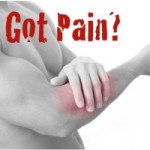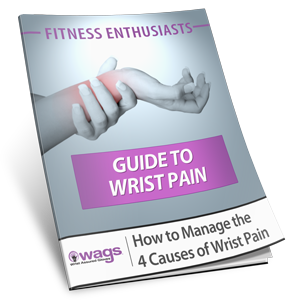
Were you a bit overzealous in attacking your resolution to get in shape? Did your zeal land you on the sidelines with an injury? Sometimes referred to as the ‘Weekend Warrior’ syndrome, you likely have an overuse injury such as tendinitis. Symptoms can appear suddenly or develop over a period of time.
What Causes Tendinitis
• Repetitive movements or series of movements (doing too many burbees or sun salutations)
• Movements with high force on the muscle or tendon (kettle bells, lifting weights that are too heavy)
• Excessive stretching of muscles (easy to do in hot yoga class)
• Fast, rapid or jerky movements
• Awkward or prolonged static postures and positions
• Reduced muscle strength increases stress on tendons
• Not enough rest after injury – resuming exercise before muscles and tendons are fully healed
Symptoms of Tendinitis
• Begins as nagging pain at the site of the tendon and surrounding muscles. Pain can sharp or dull, aching or burning and radiate up or down the limb.
• Constant pain -over time pain and stiffness increase
• Pain can be aggravated by full range of movement and / or resistance applied (i.e. weights, carrying a heavy object)
• Pain can be specific to certain positions and actions such as difficulty gripping a pot with the arm straight with tennis elbow, or turning a key with thumb tendinitis.
• Inflammation and swelling at the tendon, joint or surrounding area
• Sometimes redness and warmth occurs at the site of pain
Healing Tendinitis
If tendinitis and pain are mild, self management is possible. If it’s moderate to severe or constant seek the advice of medical professionals. Remember the acronym RICE – Rest, Ice, Compression & Elevation.
Rest:
Complete rest of the sore tendon will allow the healing process to begin. Generally 3 or more weeks is needed to heal tendinitis. Continuing the repetitive or forceful movements that caused it will only aggravate and worsen symptoms.
Modify Activities:
If it’s not possible to completely rest, try to alter any activity that causes pain or puts stress on the tendon. Notice what movements or range of motion causes or increases pain then avoid doing this movement. Using optimal body positioning and correct body mechanics will also reduce stress on muscles and tendons.
Reduce Pain & Swelling:
Elevate the affected limb and wrap in cold packs for 10-20 minutes 2 – 4 times a day. Try to keep the area elevated at or above the level of your heart to help minimize swelling. A bag of frozen peas works well to ice small areas like the thumb or wrist.
An ice massage directly on the painful area is also very effective. Use an ice cube wrapped in wash cloth or freeze water in a star foam or Dixie cup (for smaller joints), then peel away the paper at the top. Rub ice directly over and around the area for 2-4 minutes until numb. Do not leave the ice in one place on the skin. Do this 2 to 4 times a day.
Compression Wraps:
Elastic wraps (ace bandages), stretchable joint supports, compression gloves, wrist braces for tendonitis, and soft splints can reduce pain and swelling by providing even pressure around the affected tendons and muscles. They also serve as a visual reminder to take it easy on this area. Caution that elastic bandages are not wrapped too tight. This can cause more swelling below the affected area. Signs that the bandage is too tight include numbness, tingling, increased pain, coolness, or swelling in the area below the bandage. Our Wrist Assured Gloves (WAGs) provides wrist support for tendonitis, arthritis and other hand pain as well.
Therapy for Tendinitis-
Seek the advice of a medical practitioner if your tendinitis persists and you need the treatment of a skilled physical or occupational therapist to control your symptoms, evaluate body mechanics and proper ergonomics. The course of therapy to improve tendonitis wrist support may include:
• Splinting for complete immobilization and rest
• Semi-rigid, soft supports or kineseotaping
• Posture analysis and instruction in proper body mechanics
• Ergonomic training, work station modification or use of adaptive aids
• Modalities such as ultra-sound or electrical stimulation may be used
• Soft tissue mobilization / Graston Technique (GT)
• Progressing strengthening and endurance conditioning once symptoms have subsided
• Topical creams for pain relief and swelling may be recommended
• Anti-inflammatory medication and steroid injections (as prescribed by MD)
Tendinitis can wreak havoc your workout and fitness goals. To make sure you don’t have to sit out with an injury, always warm up with gentle movements and stretching before exercising and pace yourself when starting a new workout while building up your strength and endurance. Listen to your body’s warning signal and don’t ignore pain. And remember to mix it up so you’re not using the same muscle groups repeatedly in the same motions. Doing the same thing over and over not only makes you prone to tendinitis, you’ll quickly get bored. After all variety IS the spice of life! Check out our WAGs weight lifting gloves with wrist support!





Thank you very much. ..useful information
I believe I have tendinitis and when I move my wrist up and down I can feel my muscles creak if I squeeze the area that is hurt
. It’s kinda weird.. I would like your feedback…. Thanks
I went to hospital Saturday night foud out i have tendonitis how long do. i wear my hand wrapped ib ace band they wrap it in
I had hand surgery and post surgery They applied a brace. The brace caused me severe pain, I finally removed it and applied an ace wrap. I still maintained the immobility of the thumb, but now the pain is gone . The doctor is suggesting to reapply a plaster cast. That has me concerned.
Judy, I’m sorry about your troubles. We really can’t provide advice here. I would ask the doctor why he is suggesting a plaster cast. Perhaps you need to the immobility for total healing. It does seem a bit odd though.
Can I leave the compression on my elbow area all day/night or is that not good. How long is the right amount of time to leave the compression on each day?
Karin, There really isn’t one answer. As long as it’s not too tight you can leave it on for a lengthy time, but the goal is always to transition out of it. I would start with taking it off… a 1/2 hour, then an hour and increase as you tolerate. It’s difficult to say not know how severe your tendinitis is. Good luck!
Cortisone shots, given by someone experienced at it, works miracles. Initial increase in pain for several hours is to be expected.Just don’t overwork when relief hits…the doctor should tell you this.
BTW, my tendonitis, severe, is from both my long barber/hairstylist career. Working on and around my homes over the decades, too.
Who has time for the above, non-constructive nonsense?
You’re right cortisone shots work great if your tendonitis is severe. But you have to be careful not to get too many – it can lead to permanent damage & weakness. The suggestions I gave were for those with mild to moderate tendonitis.
Bless u Paula. Been lifting for 25+years. Last few, with serious pain in wrist.
I looking forward to diligently R.I.C.E. along with some of your other suggestions.
Depending on how serious it is you may need to rest your wrists awhile. Best of luck to you Mario!
I’ve had a horrible ache and pain in my upper arm, it aches so bad come evening time, I’m very prone to tendinitis, as I have chronic inflammation as well. I have a brace on it today and the pressure seems to help a lot. Would physical therapy be a good idea? I’m an esthetician, so I use my arms and hands everyday for several hours
A PT could take a look and get you on a rehab program to calm your tendonitis down. That’s good that your wearing a brace and it’s helping. Try to limit the movement that
aggravates your arm. If you can at work plan breaks in between clients to give your arm / hand a rest. Good Luck!
I fell & fractured my wrist on 6/1/22 Got cast off
Now I have excruciating pain & burning sensation in that wrist It sounds like I have Tendinitis
I have a brace the Physio sold me last week I probably did to much whilst in cast
Hopefully I won’t have to go into a cast for a few weeks again Have to wait & see I have an appointment with Physio on 19 th July
Fingers crossed 🤞
I’m sorry you’re going through all of that. Hopefully you’re on your way to a full recovery. We wish you the best!
How can you tell if you have rested the tendon long enough? btw, I think you have misspelled ‘tendonitis’ as ‘tendinitis’ in several places on this web page. How can you tell when is it appropriate to begin stretching exercises? How can you tell when it is it appropriate to begin strengthening exercises?
Jim, When the pain decreases quite a bit you’d be safe to start gentle stretches. Be careful not to stretch to maximum range of motion while your healing and avoid sudden quick movements or anything that causes more than mild pain/discomfort. Best of luck, Paula